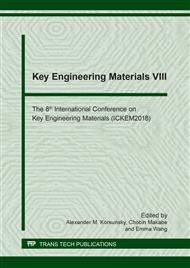p.390
p.395
p.402
p.408
p.419
p.427
p.434
p.441
p.448
Leaching Behavior Analysis of Valuable Metals from Lithium-Ion Batteries Cathode Material
Abstract:
The paper concerns an approach about using environmental technology and hydrometallurgical process to the recovery of valuable metal from waste cathode material produced during the manufacture of lithium-ion batteries. It is noteworthy that the content of nickel, manganese and cobalt from cathode material are in the extraordinary large proportion. In the acid leaching step, the essential effects of H2SO4 concentration, H2O2 concentration, leaching time, liquid-solid mass ratio and reaction temperature with the leaching percentage were investigated. The cathode material was leached with 2M H2SO4 and 10 vol.% H2O2 at 70 °C and 300 rpm using a liquid-solid mass ratio of 30 ml/g and the leaching efficiency of cobalt was 98.5%, lithium was 99.8%, nickel was 98.6% and manganese was 98.6% under optimum conditions. Kinetic study demonstrates the activation energies for those analyzed metals with Arrhenius equation and manifests the data with hybrid reaction control mechanism. The process was proved from activation energies ranged from 27.79 to 47.25 kJ/mol. Finally, the valuable metals will be leached in sulfuric acid effectively.
Info:
Periodical:
Pages:
419-426
Citation:
Online since:
August 2018
Authors:
Price:
Сopyright:
© 2018 Trans Tech Publications Ltd. All Rights Reserved
Share:
Citation:


